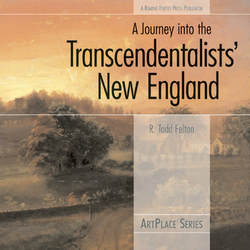Читать книгу A Journey Into the Transcendentalists' New England - R. Todd Felton - Страница 31
На сайте Литреса книга снята с продажи.
Abolitionist Movement
ОглавлениеOne of the central tenets of Transcendentalism was the belief that the very essence of God runs through each person and connects the individual with what Emerson termed the Oversoul. Therefore, many Transcendentalists found it intolerable that their black brethren were being held as slaves. Antislavery activities took a variety of forms, but nearly all of the major Transcendentalists became involved with the abolitionist movement in one way or another.
Not surprisingly, Boston was central to this movement. William Lloyd Garrison, one of the city’s earliest activists, made his first major antislavery speech in 1829 in the (6) Park Street Church, at 1 Park Street and began publishing the Liberator in 1831. In 1832 he started the New England Anti-Slavery Society at the African Meeting House at 8 Smith Court, in the Beacon Hill neighborhood, and he worked with the Tappan family of New York to form the American Anti-Slavery Society in Philadelphia in 1833.
Garrison’s power as an orator and writer is evident in this passage from the first issue of the Liberator:
On this subject [slavery], I do not wish to think, or speak, or write with moderation. No! no! Tell a man whose house is on fire, to give a moderate alarm; tell him to moderately rescue his wife from the hands of the ravisher; tell the mother to gradually extricate her babe from the fire into which it has fallen;—but urge me not to use moderation in a cause like the present. I am in earnest—I will not equivocate—I will not excuse—I will not retreat a single inch—AND I WILL BE HEARD.
Ministers such as Parker, Channing, and Clarke were among Transcendentalism’s most visible abolitionists. All three of these men, as well as many others in churches across Massachusetts and New England, spoke out against slavery almost weekly in their sermons, while writers such as Emerson and Thoreau also took up the call.
The radical abolitionist John Brown attacked an arsenal at Harpers Ferry, Virginia, in hopes of inspiring an uprising of slaves. He was caught and hanged for treason and immortalized by writers such as Emerson and Thoreau.
Park Street Church today.
Emerson was vocal on such issues as the Fugitive Slave Law and the Kansas-Nebraska Act, which established the states of Kansas and Nebraska and left the issue of slavery up to territorial settlers, or “popular sovereignty.” This allowed each side of the slavery issue to exert enormous pressure on the citizens of those new states, frequently leading to unrest and bloodshed. He hosted the abolitionist John Brown twice in his home and clearly supported Brown’s goals, if not his methods. Thoreau, whose lectures “Slavery in Massachusetts” and “A Plea for Captain John Brown” clearly demonstrated his position, was perhaps the most passionately vocal abolitionist writer. He first gave his lecture “Slavery in Massachusetts” at an antislavery convention in Framingham in 1854, after which William Lloyd Garrison burned the Constitution.
Others took an even more active role against slavery. Franklin Sanborn, Concord’s Transcendentalist schoolmaster, was instrumental in bringing John Brown to Concord and introducing him to the liberal thinkers there. Theodore Parker hid a fugitive in his house, agitated on behalf of escaped slave Anthony Burns, and raised money to buy weapons for John Brown. The antislavery Boston Vigilance Committee (which included Alcott, Parker, Channing, and Thomas Wentworth Higginson) tried to ensure the safety of Burns and other escaped slaves, such as Thomas Sims. The Alcott and Thoreau families were active participants in the Underground Railroad, which passed through Concord on its way to Canada.
Tremont Street, looking toward Park Street Church.
Unfortunately, the Masonic Temple did not enjoy as enduring an existence as some of its more famous occupants. It was sold in 1858 to the U.S. government, which used it as a courthouse until it was demolished to make way for a department store. The Masons now occupy a site just down the road, at 186 Tremont Street.
